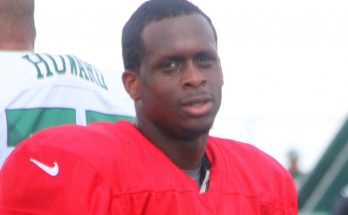The Green Bay Packers had a tumultuous offseason, to say the least. They forgot to draft any good offensive weapons for Aaron Rodgers, who, in turn, went on a walkabout this offseason, ate some clay, called himself “immunized” and then caught COVID-19 anyway. Throughout all of this, the Packers still cruised, clinching the #1 seed in week seventeen and giving their little brothers, the Detroit Lions, something to smile about in week eighteen. Now, they’re a team with a lot that might change this offseason, but what should we remember about this iteration of the Green Bay Packers for 2022 fantasy football leagues?
- The Davante Adams downturn was inevitable. The man averaged over a touchdown per game in 2020 (18 touchdowns in 14 games), which drove his 25.7 PPR points per game figure. In 2021, he dropped down to 11 touchdowns in 16 games, and his points per game dropped to 21.5. This point total would have been WR4 in 2020, and the only difference other than the touchdown drop was 0.5 catches for one yard per game. Should Aaron Rodgers return, this means good things for Davante Adams’ touchdowns going the other way in 2022.
- Speaking of Aaron Rodgers, “as the great MLK said,” regression hit him, as well. But his regression wasn’t as high as it seemed as though it would be. In the previous five seasons where a QB had 500+ pass attempts and a TD rate over 8% (Rodgers’ was 9.1% in 2020), the average decline was 2.9%. Rodgers dropped just 2.1%, which gave him 37 touchdowns, and not the 32 I projected for him based on the prior precedent set by the previous five seasons after spiked touchdown rates. The last person with a dropoff this small? Aaron Rodgers in 2012, who posted a 7.1% touchdown rate after posting a 9% touchdown rate in 2011.
- Eighteen running backs had over 1,100 scrimmage yards this year, and A.J. Dillon was one of them. At 23, Dillon was one of six running backs at 23 or younger to pull off this feat. Among backs with over 1,100 yards from scrimmage, he also boasted the seventh-highest yards per touch, at 5.05 yards per touch. The Packers drafted him to spell Aaron Jones, and that seems to be the case.
- Aaron Jones dropped from the RB4 in 2020, to the RB14 in 2021, on a per-game basis. The major reason for this really came down to a drop in carries and rush efficiency for Jones, who lost three carries per game and a full yard per carry. His touchdown rate, his yards per reception, reception count, and everything else basically stayed flat. It all came down to minute changes in opportunity and major changes in efficiency to change his value. A.J. Dillon’s efficiency and Aaron Jones’ down-the-stretch usage does not bode well for his 2022 prospects, as he averaged 13.2 touches for 83 yards per game. He’ll still be a solid backend RB1/high-end RB2, but it seems as though his 2020 campaign was mostly him just cashing in highly efficient opportunity.
- I would pump the brakes before declaring Robert Tonyan a bounceback candidate in 2022. His 2020 campaign was looking like a major mirage before he tore his ACL in week eight and the Packers lost his services for the season. The reason for this is twofold, but both pointed to pure strain regression: his touchdown rate and his catch rate. Tonyan, who had an identical yard per reception, saw his touchdown rate drop from one touchdown every 5.4 targets to one touchdown every 14.5 targets. He also went from catching 88.1% of his catches to catching 62.1% of them. Both of these were far too efficient in 2020, and his 2021 was the normalization. I’m very happy for Bob Tonyan for his 2020, but that’s the highwater mark for his career.




